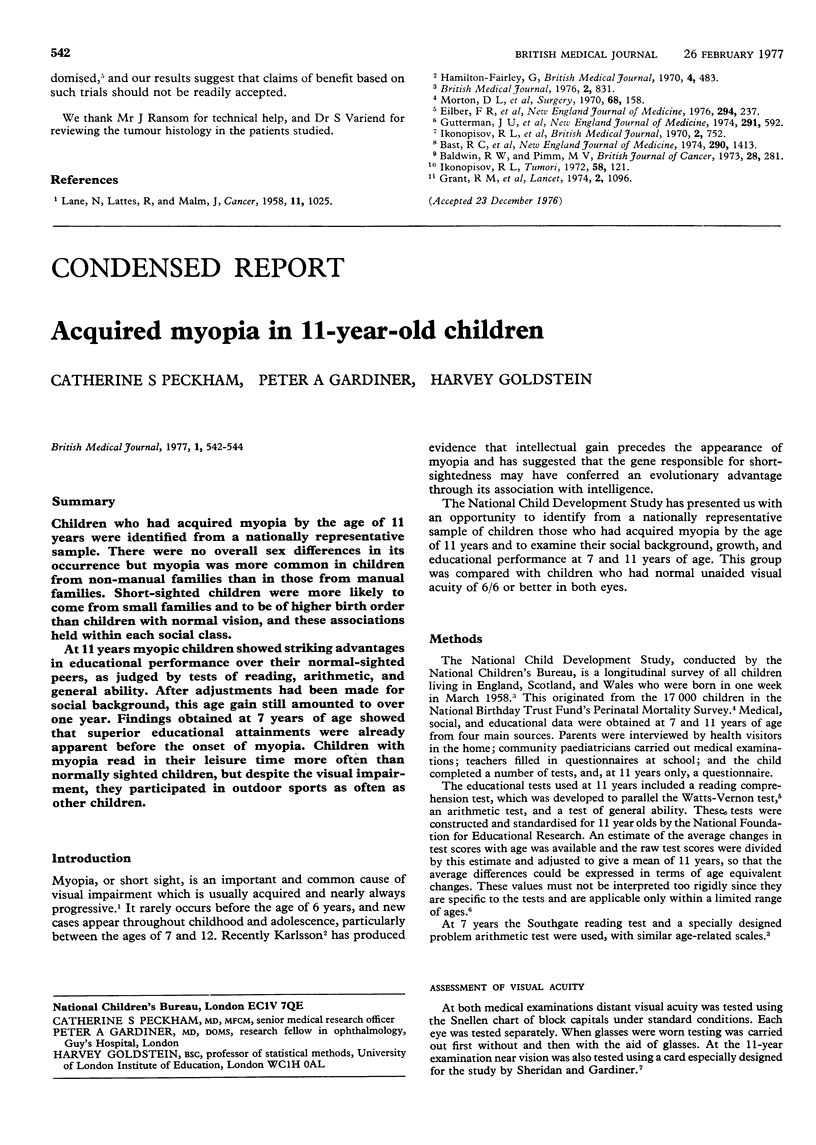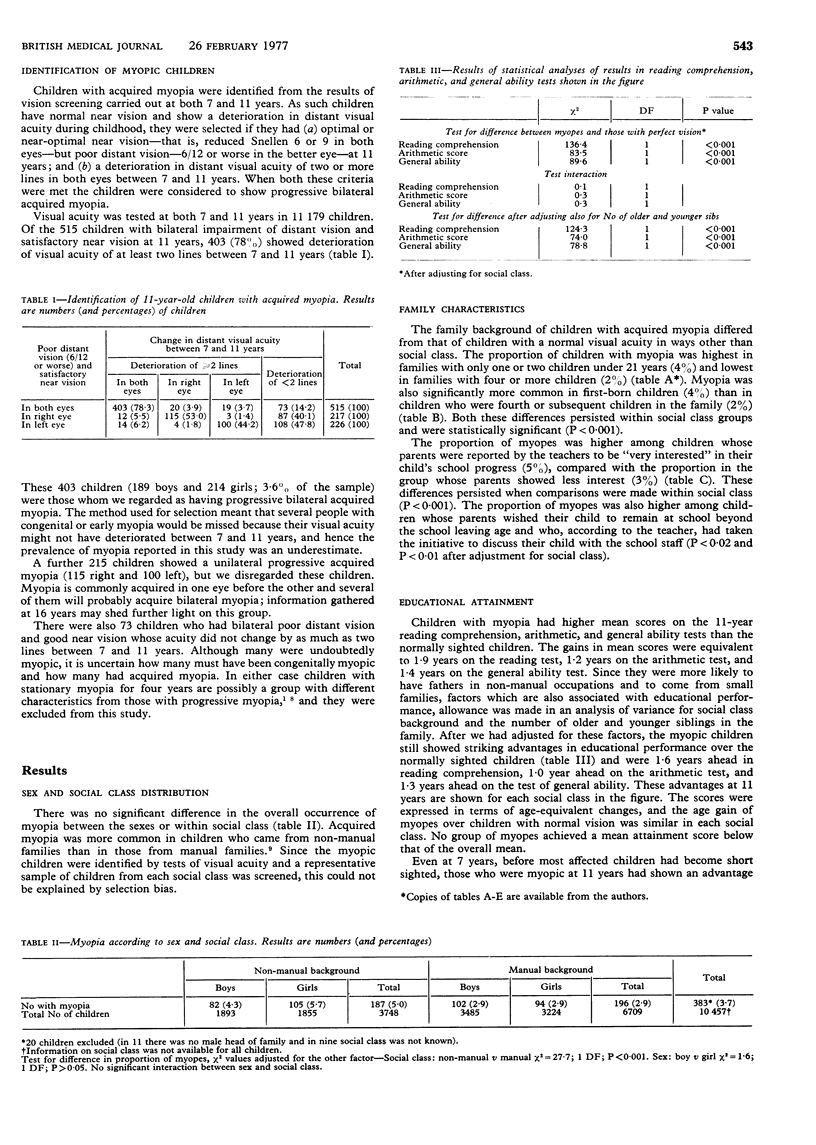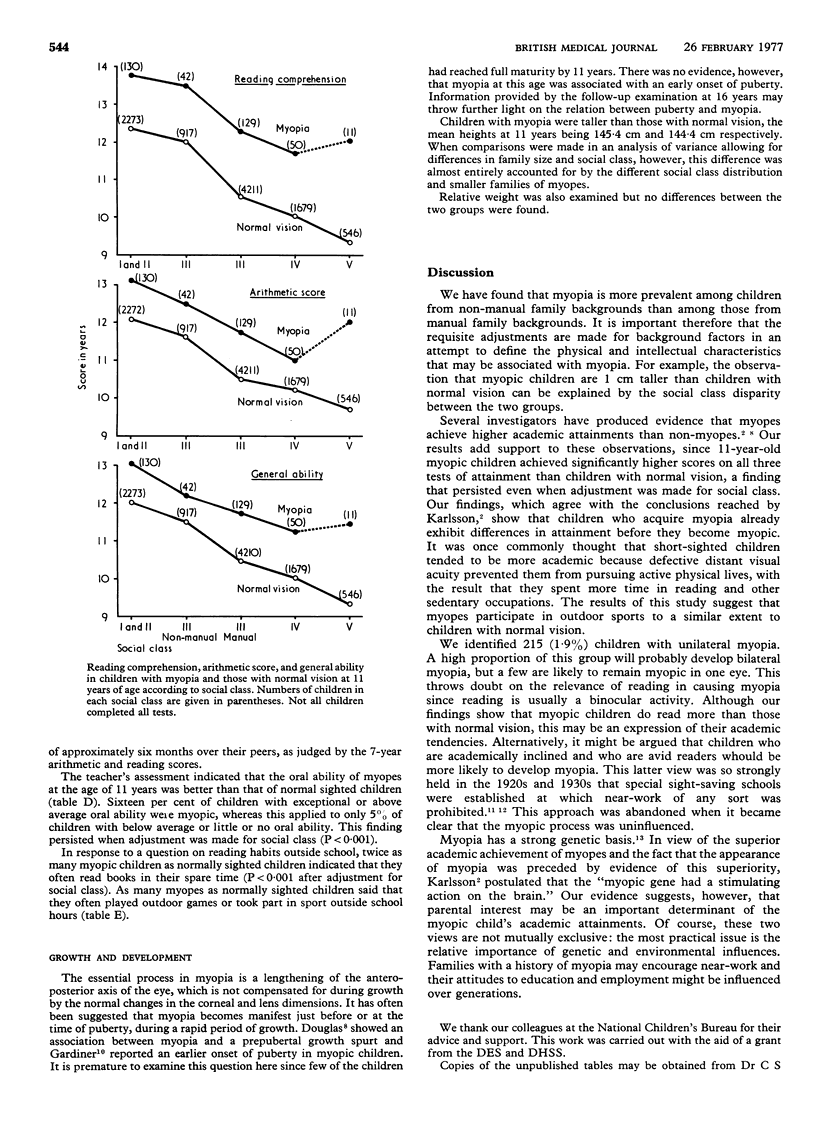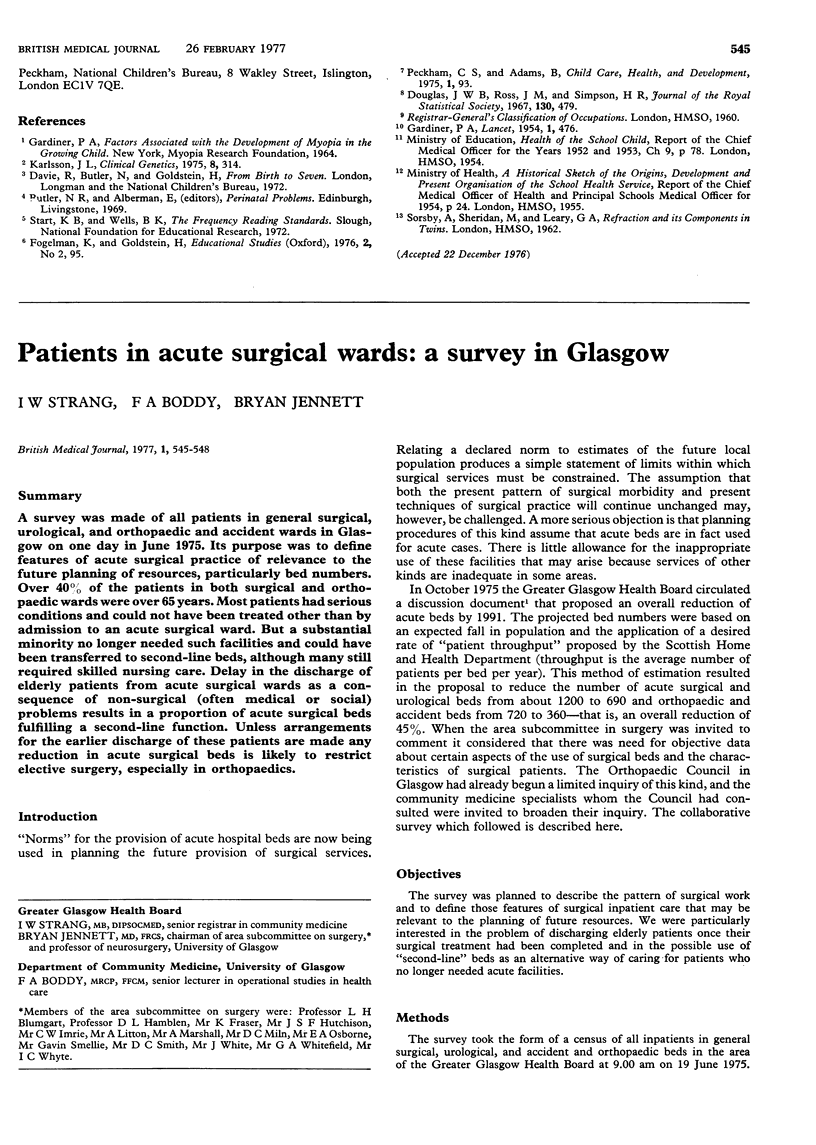Abstract
Children who had acquired myopia by the age of 11 years were identified from a nationally representative sample. There were no overall sex differences in its occurrence but myopia was more common in children from non-manual families than in those from manual families. Short-sighted children were more likely to come from small families and to be of higher birth order than children with normal vision, and these associations held within each social class. At 11 years myopic children showed striking advantages in educational performance over their normal-sighted peers, as judged by tests of reading, arithmetic, and general ability. After adjustments had been made for social background, this age gain still amounted to over one year. Findings obtained at 7 years of age showed that superior educational attainments were already apparent before the onset of myopia. Children with myopia read in their leisure time more often than normally sighted children, but despite the visual impairment, they participated in outdoor sports as often as other children.
Full text
PDF



Selected References
These references are in PubMed. This may not be the complete list of references from this article.
- GARDINER P. A. The relation of myopia to growth. Lancet. 1954 Mar 6;266(6810):476–479. doi: 10.1016/s0140-6736(54)91187-3. [DOI] [PubMed] [Google Scholar]
- Karlsson J. L. Influence of the myopia gene on brain development. Clin Genet. 1975 Nov;8(5):314–318. doi: 10.1111/j.1399-0004.1975.tb01508.x. [DOI] [PubMed] [Google Scholar]


